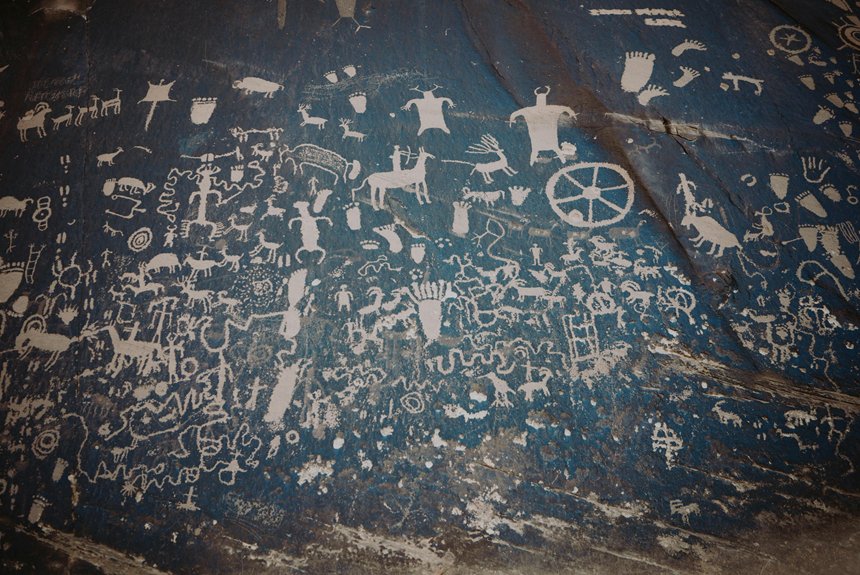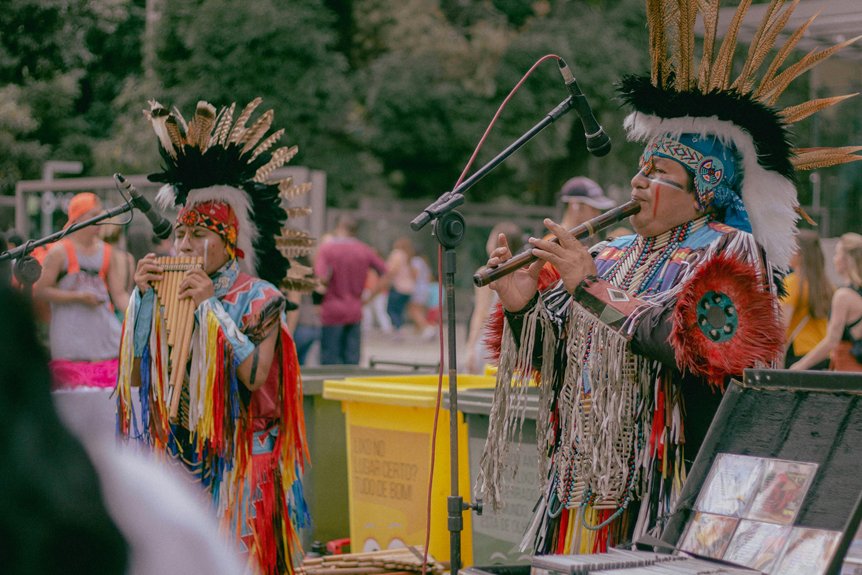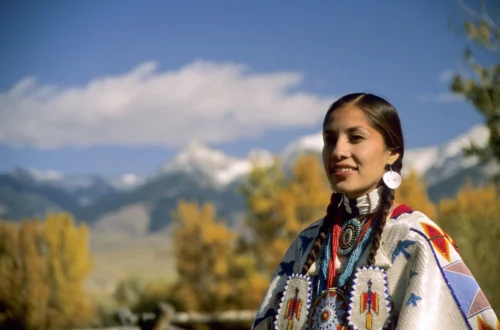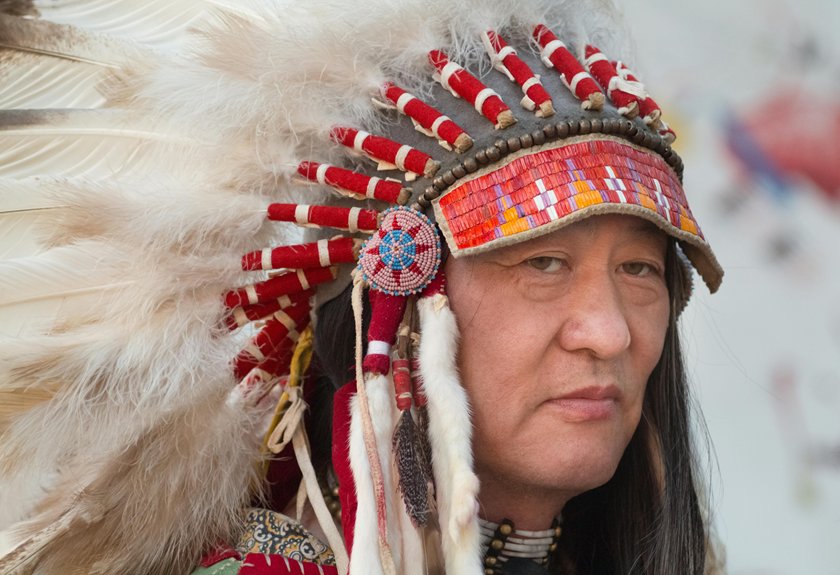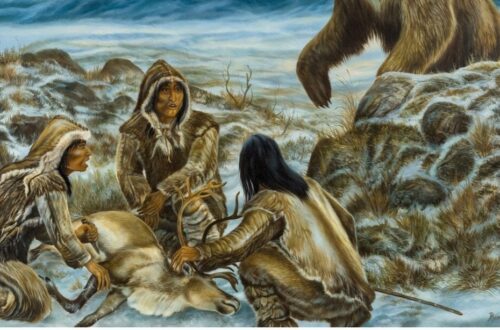Imagine a young warrior returning home, proudly displaying a scalp as proof of his bravery in battle. This act, often misunderstood, served not just as a trophy but as a profound expression of cultural identity and social standing within Native American societies. To grasp the significance of scalping, you need to explore the intricate beliefs and historical contexts that shaped this practice. What really drove these communities to adopt such a complex tradition?
Historical Context of Scalping in Native American Societies
While many people associate scalping primarily with Native American practices, it’s important to understand the broader historical context that shaped this complex tradition.
Scalping wasn’t unique to Native Americans; it was practiced by various cultures worldwide as a means of warfare. In the Americas, it often emerged from conflicts over land and resources.
For many tribes, scalping served as a way to demonstrate bravery, honor, or revenge against enemies. It also had practical implications, such as instilling fear in opponents and marking the number of victories in battle.
The practice was influenced by European colonization, which intensified violence and altered traditional customs.
Recognizing this complexity helps you appreciate the nuanced history behind scalping beyond its sensationalized portrayal.
Cultural Beliefs Surrounding Scalping
Though scalping often evokes a visceral response, understanding the cultural beliefs surrounding this practice reveals its significance within various Native American societies.
For many tribes, scalping wasn’t merely an act of violence but carried profound meanings:
- Honor and Valor: Taking a scalp could symbolize bravery and achievement in battle.
- Spiritual Significance: Some believed that by scalping, they could capture the spirit of their enemy.
- Rite of Passage: For certain young warriors, scalping could represent an essential step in proving their readiness for adulthood.
- Community Status: The number of scalps a warrior collected often reflected their status and respect within their tribe.
Understanding these beliefs helps you see scalping as a complex practice rooted in cultural identity rather than mere brutality.
Scalping as a Means of Warfare
Scalping served as a strategic component of warfare for many Native American tribes, intertwining military tactics with cultural practices. This act wasn’t merely about inflicting pain; it was a calculated move in a larger context of tribal conflict.
By taking a scalp, you demonstrated victory and instilled fear in your enemies, which could deter future attacks. It also served as a psychological weapon, eroding the morale of opposing forces.
Furthermore, scalping could be a way to avenge the deaths of tribe members, reinforcing a cycle of retribution. Understanding scalping in this light reveals its complexity, reflecting the deep intertwining of warfare, honor, and survival in Native American societies.
It’s essential to approach this topic with sensitivity and respect for their historical experiences.
Social Status and Recognition Through Scalping
Victory in battle often brought more than just survival; it also elevated an individual’s social standing within their tribe.
Scalping served as a powerful symbol of this recognition, showcasing bravery and skill. When you consider the deeper cultural implications, you can see how scalping was intertwined with identity and honor:
- Bravery: Each scalp represented the courage required to face an enemy.
- Status: Collecting scalps could elevate a warrior’s rank and influence within the tribe.
- Ritual Significance: Some tribes incorporated scalps into ceremonies, celebrating victories.
- Legacy: A warrior’s accomplishments, marked by scalps, were often passed down through generations, reinforcing their memory and esteem.
In this context, scalping was about much more than just warfare; it was a means of asserting one’s place within a community.
The Role of Scalping in Intertribal Conflicts
While many might associate scalping primarily with European colonial conflicts, it’s essential to recognize its significant role in intertribal dynamics as well. For various Native American tribes, scalping served as a powerful symbol in conflicts over territory, resources, and honor.
When you consider intertribal rivalries, the act of scalping often represented victory and dominance, a way to assert strength and intimidate adversaries. It wasn’t merely about violence; it carried deep cultural implications, reflecting social status and bravery.
In the heat of battle, scalping could also act as a deterrent, signaling the consequences of warfare. Understanding these nuances allows you to appreciate the complexity of intertribal relations, rather than viewing scalping solely through a colonial lens.
Scalping and Survival in Hostile Environments
In the harsh realities of survival, Native American tribes often faced not just intertribal conflicts but external threats that could jeopardize their very existence. Scalping emerged as a grim strategy for coping with these dangers. It served both as a psychological weapon against enemies and a means of ensuring survival.
- Territorial Defense: Scalps symbolized prowess and deterrence, warning others against invasion.
- Resource Acquisition: They could signify success in battle, securing resources essential for survival.
- Cultural Significance: Scalping rituals reinforced tribal identity and cohesion.
- Psychological Warfare: Displaying scalps instilled fear, potentially preventing future conflicts.
Understanding these aspects reveals the complex reasons behind scalping, rooted deeply in the struggle for survival in hostile environments.
European Influence on Scalping Practices
As European settlers expanded into North America, their interactions with Native American tribes greatly altered existing scalping practices. They introduced new motivations for scalping, including bounties and rewards for scalps, which intensified its prevalence.
Some tribes adopted these practices as a means of survival, responding to the settlers’ violent conflicts and territorial encroachment. As you explore this history, you’ll notice how European influences reshaped the cultural significance of scalping.
It shifted from a traditional practice tied to warfare and honor to one entangled with colonial violence and exploitation. This transformation illustrates the complex dynamics between indigenous cultures and European expansion, highlighting how external pressures can redefine practices deeply rooted in identity and survival.
Understanding this context is essential for a nuanced view of scalping in history.
Myths and Misconceptions About Scalping
Many people hold misconceptions about scalping, often viewing it solely through a lens of violence and brutality.
In reality, scalping had complex motivations and meanings within Native American cultures. Here are some key points to reflect upon:
- Cultural Practices: Scalping was sometimes part of ritualistic practices, serving spiritual or symbolic purposes.
- War and Honor: For some tribes, it represented an act of bravery and a way to honor fallen enemies.
- Survival Tactics: Scalping could be a strategic method to intimidate opponents and protect tribal lands.
- European Influence: Many practices evolved under the influence of European settlers, who often escalated violence.
Understanding these nuances helps you appreciate the diverse perspectives surrounding scalping beyond mere violence.
The Impact of Colonization on Scalping Traditions
While colonization brought profound changes to Native American societies, it also transformed traditional practices like scalping. Initially, scalping served various purposes, including warfare and ritualistic significance.
However, as European settlers imposed their own narratives and conflicts, the practice shifted in meaning. You’ll notice that colonization intensified violence, prompting some tribes to adopt scalping as a means of survival and retaliation. This adaptation often blurred the lines between cultural practice and response to external threats.
Additionally, the portrayal of scalping in colonial narratives often misrepresented its significance, framing it as barbaric rather than a complex cultural response. Consequently, colonization not only altered the practice but also how it was perceived, leading to lasting ramifications in Native American identity and history.
Modern Perspectives on Scalping and Native American History
In today’s discussions about Native American history, you might encounter a wide range of opinions regarding the practice of scalping. To better understand this complex topic, consider the following points:
- Cultural Context: Scalping wasn’t universally practiced among Native tribes and often had specific meanings tied to warfare and honor.
- Colonial Influence: European settlers adopted and amplified scalping as a tool of violence, further complicating its narrative.
- Misconceptions: Many contemporary views are shaped by stereotypes, overshadowing the rich tapestry of Native American cultures.
- Reclamation of History: Modern Native voices seek to reclaim narratives, emphasizing resilience and the broader historical context of their experiences.
